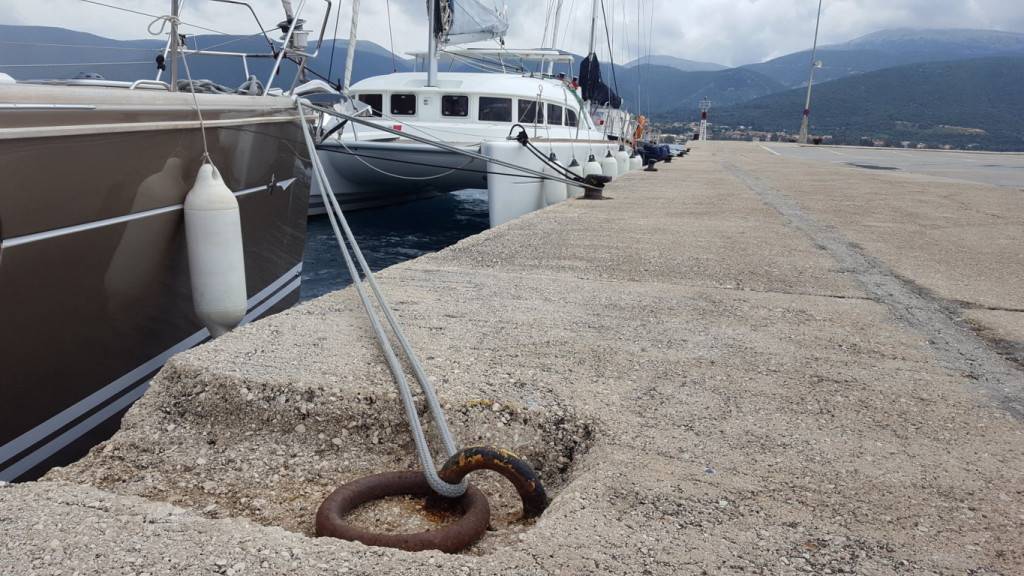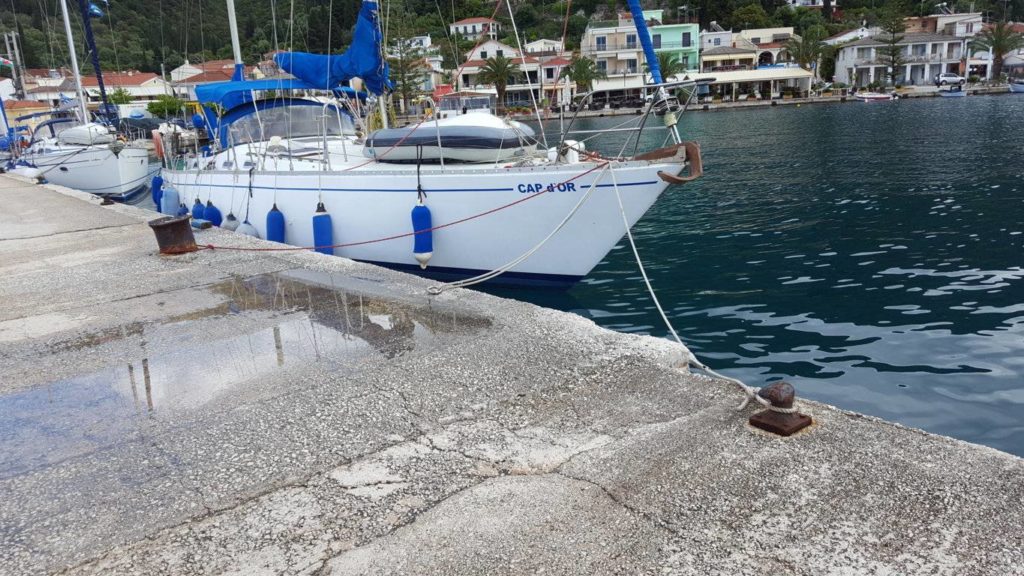Springs, breast lines, and cross lines. Knowing how to handle all the names of the lines and using them correctly during mooring is not obvious, at least for those new to sailing. Today we offer you a tutorial on how to use different types of lines in an English-style mooring.
When approaching a dock sideways, which is a relatively simple operation, remember that a windward dock is preferable. The advantages are significant in terms of speed control and approach angle. We understand this isn’t always possible.
It may be useful (hopefully not) to remember that when approaching the dock, two lines should already be prepared during the approach to the marina. These are the bow line and the stern line, simply put, the bow and stern mooring lines. With this preliminary operation, we ensure we can immediately secure the bow and then moor the stern in any situation, with the help of someone on the dock or a crew member who disembarks.
At this point, the vessel is already secured in an acceptable position for a brief stop. This is a standard situation when you only need to refuel or pick up new passengers. However, for obvious safety reasons, this is not sufficient if the planned mooring duration is much longer.
The bow mooring and stern lines are meant to prevent the boat from moving away from the dock and from moving forward or backward. To accomplish their task, they must remain spaced several meters in front of the bow and behind the stern.

Even more important than breast lines, the spring lines stop the boat’s oscillating movements in every direction: both approaching and moving away from the dock, and both to the right and left. Known to more educated boaters as springs, they remain fundamental for mooring. In favorable weather conditions, and when you’re certain you can intervene in case of sudden changes, you can limit yourself to securing two lines at bow and stern and two springs. This is a practical, quick solution, suitable for saving some time. Perhaps a bit lazy, but not ineffective. However, don’t limit the precision in using fenders, which must be positioned at the right height to protect the hull.


